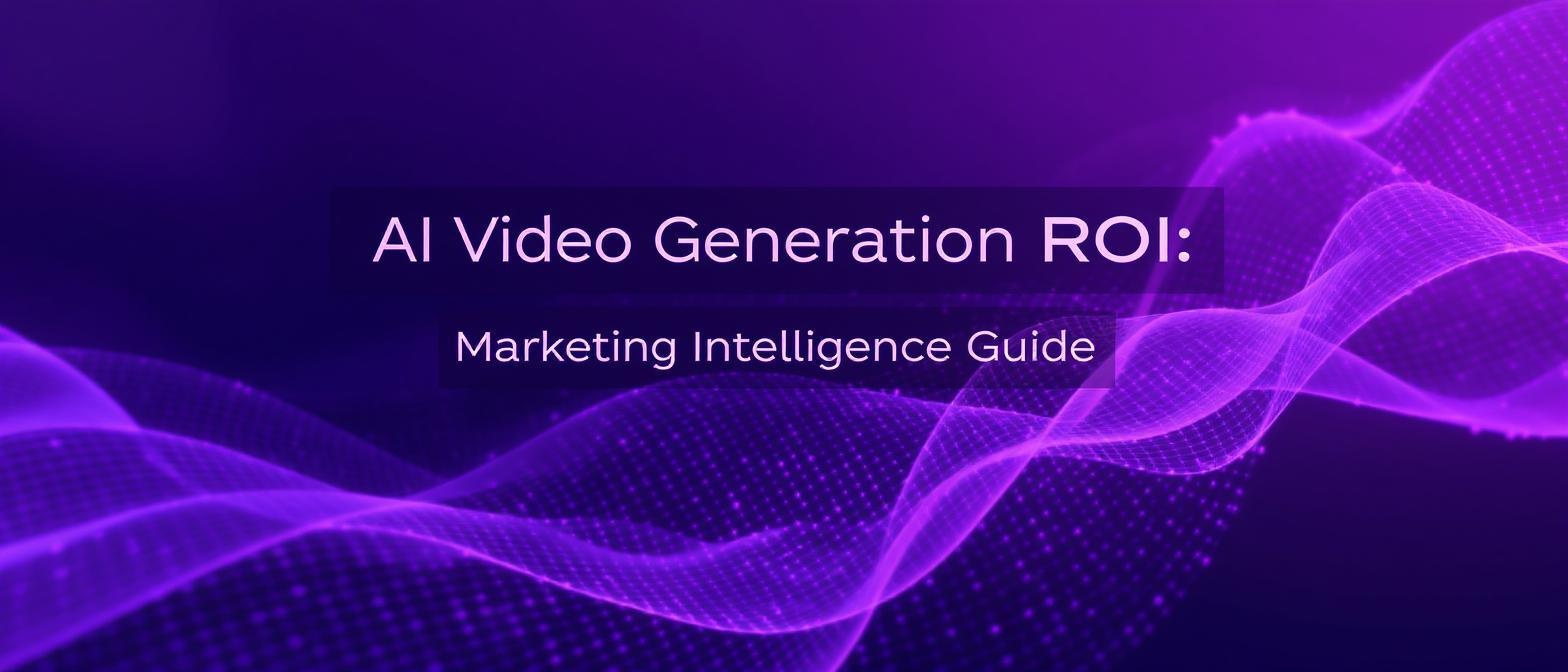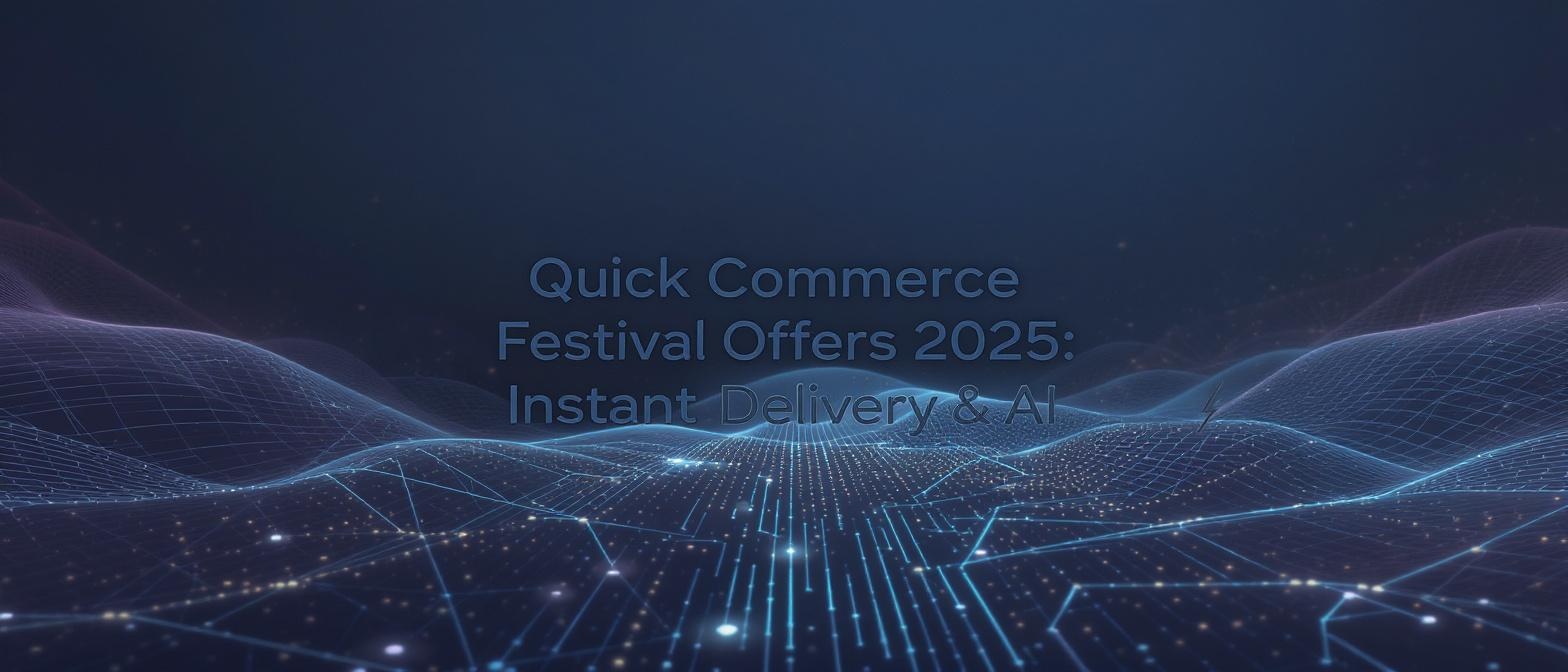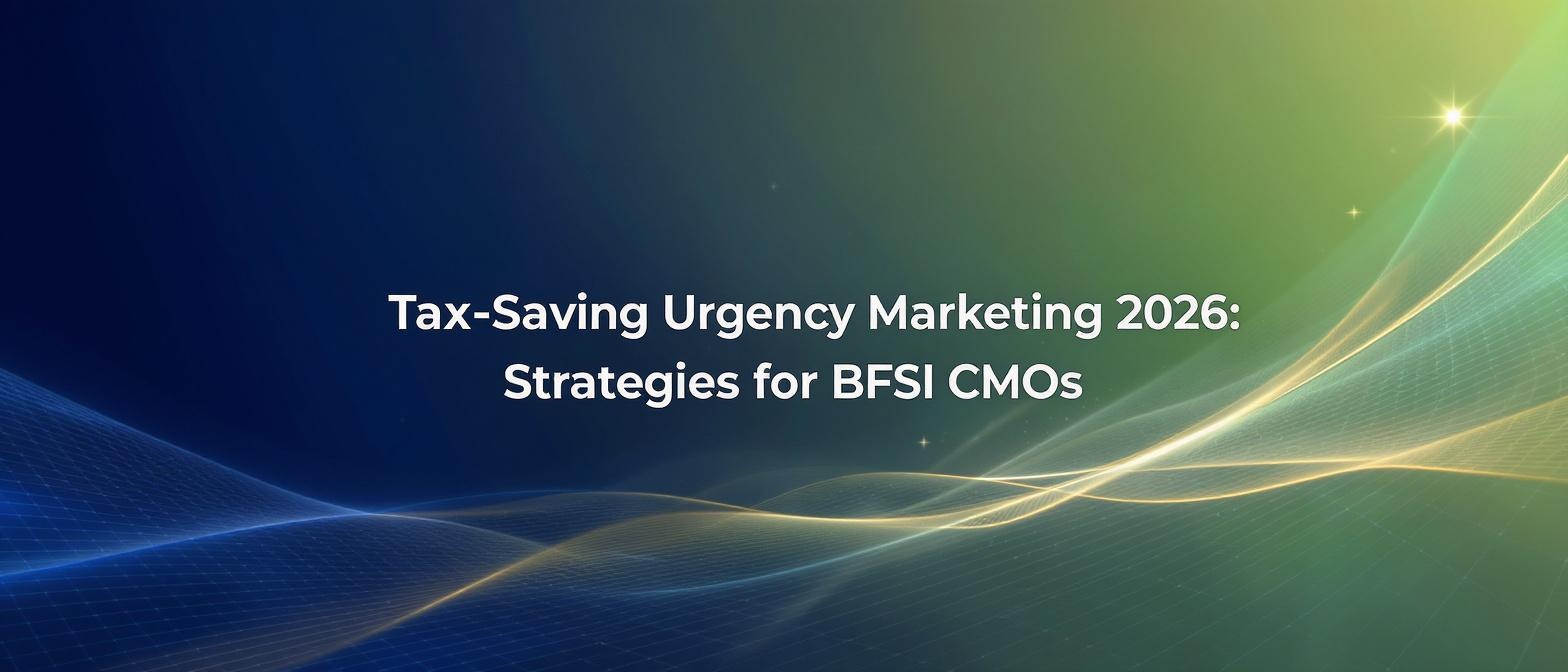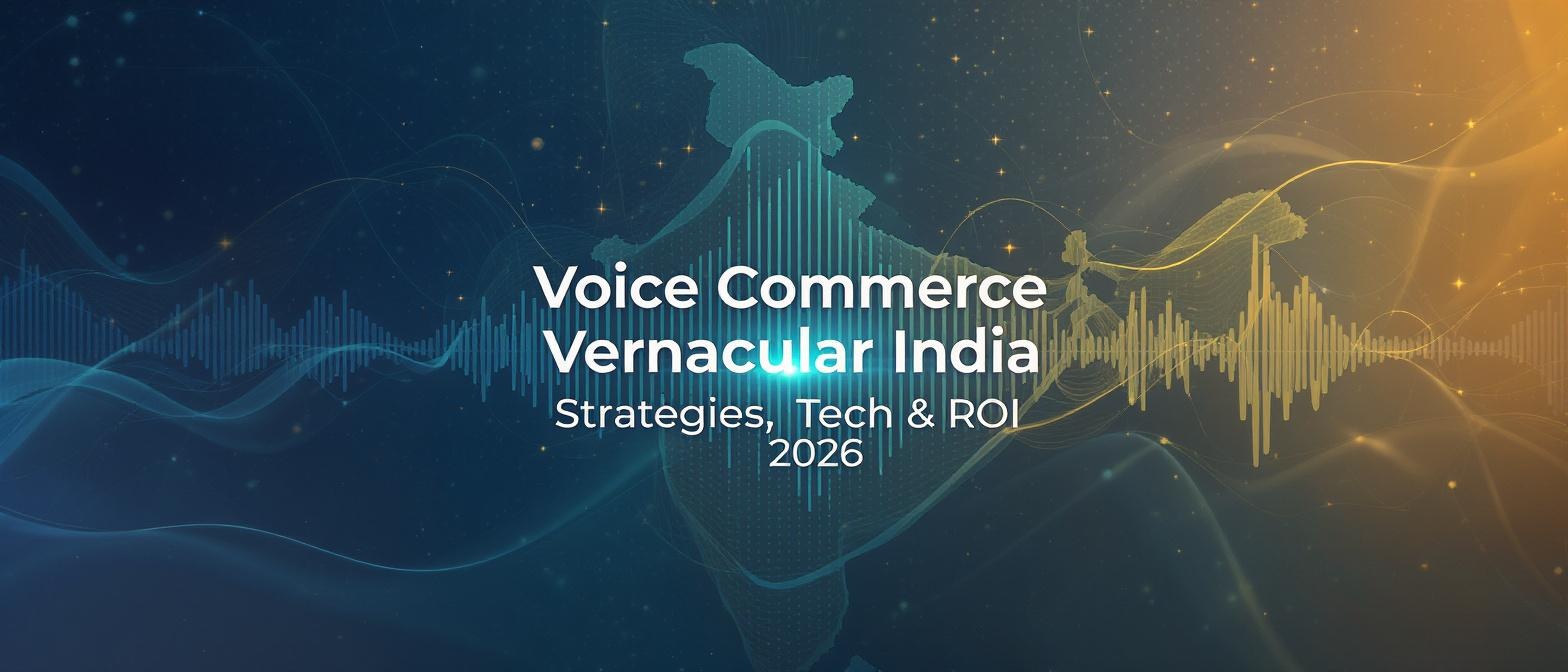Beyond the Hype: The Real ROI of AI Video Generation in Marketing
Estimated reading time: ~12 minutes
Key Takeaways
- AI video generation reduces production costs by an average of 58%.
- Shifts focus from content velocity to content intelligence.
- Ethics and transparency are critical for maintaining brand trust.
- Measuring ROI includes cost savings, performance uplift, and brand safety.
In 2025, the digital marketing landscape is not just evolving; it’s undergoing a seismic shift. A staggering 79% of eCommerce brands are now using AI-generated videos to showcase their products, a testament to a technology that has moved from novelty to necessity. Yet, for many marketing leaders, the conversation around AI video often gets stuck on surface-level benefits like speed and basic cost savings. This leaves a critical gap in understanding: how does this technology translate into measurable, strategic growth, and what are the deeper operational and ethical considerations we must navigate?
This article moves beyond the initial hype. We will dissect the true impact of AI video generation, not just as a content production tool, but as a core driver of marketing intelligence and efficiency. We’ll explore the nuances of implementation, confront the ethical questions head-on, and provide a concrete framework for measuring your return on investment. We will uncover how to leverage this technology not just to create more content, but to create smarter, more personalized, and globally resonant content that was previously unattainable for most teams. Prepare to see AI video not as a replacement for creativity, but as its most powerful new catalyst.
Section 1: Re-framing the Challenge: From Content Velocity to Content Intelligence
The primary challenge in modern marketing is often misdiagnosed as a simple need for “more content.” The real issue is a bottleneck of scalability, personalization, and cost-efficiency. Traditional video production, with its long timelines and high costs, is fundamentally at odds with the demands of today’s fragmented, hyper-personalized digital channels. The result is a perpetual compromise: marketers are forced to choose between quality, speed, and relevance, rarely achieving all three. This isn’t just a production problem; it’s a strategic limitation that caps campaign effectiveness and market reach.
The statistics paint a clear picture of this paradigm shift. The global AI video generator market is not just growing; it’s exploding, with a projected compound annual growth rate (CAGR) of 20.3% in North America alone. This isn’t driven by a desire for cheap content, but by a strategic need for agility. Furthermore, businesses that adopt AI video tools report an average reduction of 58% in production costs compared to traditional methods. This liberated capital and time doesn’t just mean more videos; it means more opportunities for A/B testing, more targeted messaging for niche audiences, and the ability to react to market trends in hours, not weeks. The challenge, therefore, isn’t just about producing videos faster. It’s about building a content engine that is intelligent, responsive, and financially sustainable, allowing brands to connect with customers on a global scale with unprecedented precision.
Section 2: Innovation & Solutions: The New Stack for Scalable Video
The solution to this challenge lies in a new generation of AI platforms that democratize sophisticated video production. These tools go far beyond simple template-based editors, offering a suite of features that directly address the core bottlenecks of traditional workflows. The innovation isn’t just about automating editing; it’s about integrating AI at every stage of the process, from script to final render, enabling a level of scale and personalization that was once the exclusive domain of large enterprises with massive budgets. This new technology stack is built on principles of accessibility, integration, and responsible AI.
At the forefront of this evolution, platforms like Studio by TrueFan AI enable marketers to move from idea to broadcast-ready video in minutes. The core technology revolves around photorealistic AI avatars and advanced voice synthesis. Instead of hiring actors, booking studios, and managing film crews, a marketer can simply type a script. The platform generates a high-definition video featuring a professional AI avatar delivering the lines with natural inflection and, crucially, perfect lip-sync in multiple languages. This addresses the technical challenge of creating authentic-looking human presenters. Furthermore, built-in content moderation systems are becoming a critical feature, providing a “walled garden” that prevents the creation of harmful or off-brand content, ensuring brand safety and ethical use are baked into the workflow from the start. This combination of speed, quality, and governance is the true innovation driving adoption.
For more on transforming video ad strategies, check out AI Video Creation: Transforming Video Ad Strategies for Maximum Marketing Impact.
Section 3: Advanced Implementation: A Framework for Global Content Strategy
Adopting AI video generation requires more than just signing up for a tool; it demands a strategic shift in how content workflows are managed. A successful implementation focuses on creating a scalable, repeatable system for testing, localization, and personalization. Here is a practical framework for integrating AI video into your marketing operations:
1. Establish a Center of Excellence (CoE):
Assign a small team or individual to become the subject matter expert on your chosen AI video platform. Their role is to establish best practices, create templates for different campaign types (e.g., social media ads, product explainers, internal training), and manage the library of approved scripts and brand assets.
2. Develop a “Core Message” & “Variant” Strategy:
Start with a “core message” video in your primary language. This is your control version. Then, leverage the AI platform’s capabilities to rapidly generate variants.
- Localization Variants: Use the platform’s multilingual features to instantly create versions for different regions. Studio by TrueFan AI’s 175+ language support and AI avatars make this seamless, instantly translating the script and ensuring the lip-sync remains perfect, a task that would traditionally require weeks of work and multiple voice-over artists.
- Audience-Segment Variants: Tweak the script’s hook or call-to-action to resonate with different customer personas (e.g., “For Small Businesses...” vs. “For Enterprise Leaders...”).
- A/B Testing Variants: Create two versions with slightly different value propositions or emotional tones to test which performs better on platforms like Facebook or LinkedIn.
3. Integrate with Your Marketing Stack:
Use webhooks or API integrations to connect the AI video platform directly to your marketing automation or social media scheduling tools. This allows for the automated distribution of new video variants as they are created, closing the loop from production to deployment and creating a truly agile content pipeline. By following this framework, you move from ad-hoc video creation to a systematic engine for generating targeted, global content at scale.
For insights on creating A-Roll footage efficiently, refer to Create Professional A-Roll Footage in Minutes with AI Video Generator Technology.
Section 4: Overlooked Considerations: Ethics, Authenticity, and Brand Trust
While the operational benefits of AI video are compelling, a sophisticated marketing strategy must also navigate the often-overlooked considerations of ethics and authenticity. The rise of deepfake technology has created a healthy public skepticism towards AI-generated media. Ignoring this reality is a significant risk to brand trust. Marketers have a responsibility to be transparent and ethical in their use of these powerful tools.
The first consideration is disclosure. While not always legally required, transparently indicating that a video features an AI avatar can build trust with your audience. A simple, non-intrusive watermark or a line in the description like “This presentation is delivered by our AI brand ambassador” can pre-emptively address audience concerns and frame the technology as an innovative communication tool rather than a deceptive one.
The second, and more critical, consideration is content governance. The power to generate video from a script carries the inherent risk of misuse, whether intentional or accidental. This is where the choice of platform becomes a crucial ethical decision. Leading platforms are building robust safety features, such as real-time filters that block profane, hateful, or politically sensitive language. They operate on a “consent-first” model, ensuring that all avatars are either fully licensed digital twins of real people or are entirely fictional, preventing the unauthorized use of a person’s likeness. Choosing a platform with a 100% clean compliance record and certifications like ISO 27001 is not just a technical choice; it’s a statement of your brand’s commitment to responsible innovation.
Section 5: ROI & Metrics: Calculating the True Return of AI Video
To secure budget and prove strategic value, marketers must move beyond vanity metrics and calculate the tangible ROI of AI video generation. The formula goes deeper than simply comparing the cost of a software subscription to the cost of a video shoot. A comprehensive ROI analysis includes efficiency gains, performance uplift, and risk mitigation.
Here’s a framework for measuring the true ROI:
1. Calculate Cost Savings & Efficiency Gains:
- Production Cost Reduction: (Cost of Traditional Video Production) – (Cost of AI Video Platform Subscription + Staff Time) = Direct Cost Savings.
- Time-to-Market Value: Quantify the value of speed. For example, if a product launch can happen two weeks earlier because videos were ready, calculate the additional revenue generated in that two-week period.
2. Measure Performance Uplift:
- Conversion Rate Impact: A/B test a traditional video ad against an AI-generated variant. Measure the difference in conversion rates. Even a small lift, when scaled across a large ad spend, can result in significant revenue gains.
- Engagement Metrics: Track metrics like video completion rate, click-through rate, and shares. Higher engagement often correlates with higher brand recall and future conversions.
- Localization ROI: Compare the cost of translating and dubbing a video traditionally versus using an AI tool. Solutions like Studio by TrueFan AI demonstrate ROI through their ability to enter new markets with localized content at a fraction of the cost, unlocking previously untapped revenue streams.
3. Factor in Strategic Value:
- Increased Testing Capacity: Estimate the value of being able to run 10x more A/B tests on your messaging. This “learning velocity” improves overall campaign effectiveness over time.
- Risk Mitigation: The value of a platform with built-in content moderation is the avoidance of a brand safety crisis, which can have an unquantifiable but massive negative financial impact.
By combining these three areas, you can present a holistic business case that showcases AI video not as a cost center, but as a powerful driver of revenue and strategic advantage.
For a deeper understanding of ROI calculations, explore AI Video Generator: Beyond Text-to-Speech in 2025.
Section 6: The Future Roadmap: From Generation to Cognition
Looking toward 2025 and beyond, the trajectory of AI video is moving from simple generation to cognitive creation. The next wave of innovation will see these platforms become true creative partners, capable of understanding context, suggesting narrative improvements, and even dynamically generating content based on real-time user data.
One of the most significant emerging trends is hyper-personalization at scale. Imagine a customer receiving a welcome video that not only uses their name but references their specific interests or the product they just viewed, all generated instantly at the moment of interaction. This level of personalization, powered by integrations with CRM and e-commerce platforms, will redefine customer engagement.
Another key trend is the rise of interactive AI avatars. Instead of passively watching a video, users will be able to ask the AI avatar questions, creating a conversational experience that can be used for everything from customer support to interactive product tutorials. To prepare for this future, marketers should begin building their internal expertise now. Focus on data cleanliness to power personalization, start experimenting with different AI personas to find your brand’s voice, and prioritize platforms that have a clear roadmap for API integrations and interactive capabilities. The brands that will win in the next five years are the ones building their AI content engines today.
Frequently Asked Questions
How do you ensure AI-generated videos don’t look fake or robotic?
The key lies in the quality of the underlying technology. High-end platforms use digital twins of real human actors and advanced voice cloning from professional artists. This ensures that the facial expressions, intonations, and lip movements are natural. Features like perfect lip-sync across multiple languages are critical for maintaining authenticity and avoiding the “uncanny valley” effect.
What is the main difference between professional AI platforms and free tools?
The main differences are quality, safety, and scalability. Professional platforms offer broadcast-quality HD/4K video, licensed avatars to avoid legal issues, and robust content moderation to protect brand reputation. Free tools often have lower resolution, watermarks, limited features, and lack the critical safety guardrails and compliance certifications (like ISO 27001) needed for business use.
Can AI video generation be used for sensitive internal communications?
Yes, this is a growing use case. For corporate training, policy updates, or executive messages, AI video allows for consistent, clear communication that can be easily localized for global teams. Choosing a platform with strong security protocols and the ability to create custom, private avatars of company leaders is essential for maintaining confidentiality and trust.
How does Studio by TrueFan AI handle content moderation and brand safety?
Studio by TrueFan AI has built-in safety protocols as a core part of the platform. It uses real-time content filters to block profanity, hate speech, and other inappropriate content before a video can be generated. This “walled garden” approach ensures 100% content compliance and protects brands from the accidental or intentional misuse of the technology.
What kind of ROI can a small business expect from using AI video?
For a small business, the ROI is primarily driven by efficiency and access. Instead of spending thousands on a single video, a small business can use an affordable subscription (starting around ₹2,999/month) to create dozens of marketing videos, social media ads, and product demos. This allows them to compete with larger companies by testing more messages, reaching more audiences, and producing professional-grade content without the high cost.
Is knowledge of video editing required to use these platforms?
No, and that is their primary advantage. The best AI video generation platforms are designed for marketers and communicators, not video editors. The workflow is typically script-based: you type or paste your text, choose an avatar and background, and the platform generates the video. This removes the technical barrier and empowers anyone on the team to create high-quality video content.
Conclusion
The integration of AI into video marketing is not a fleeting trend; it is the new operational standard for brands that want to compete and win in a global, digital-first economy. We’ve moved past the simple “wow” factor of a talking avatar to a place of profound strategic value. By reframing the core challenge from content velocity to content intelligence, we unlock the true potential of this technology. The ability to test, personalize, and localize content at a scale and cost that was previously unimaginable is a genuine game-changer.
The evidence is clear: with businesses reporting 58% cost reductions and platforms enabling market entry into over 175 languages overnight, the ROI is no longer a question of “if” but “how much.” However, this power comes with the responsibility of ethical implementation, prioritizing transparency and brand safety. The path forward involves embracing a framework of systematic implementation, measuring a holistic ROI that includes efficiency and strategic value, and choosing partners committed to responsible innovation. The future of marketing isn’t about letting AI replace human creativity; it’s about using AI to amplify it, allowing us to tell more personal, more impactful, and more resonant stories to every customer, everywhere.
For techniques on adding text to videos effectively, visit How to Add Text to Video: A Complete Guide to AI Video Text Overlays and Subtitles for 2025.





